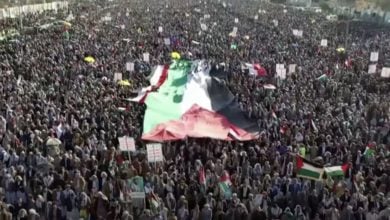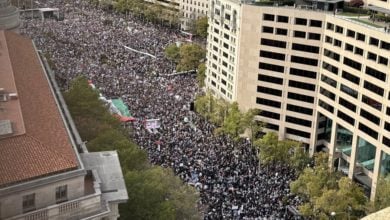As of February 24, any immigrant in the United States who is currently accessing or seen as likely to access public benefits may now be legally denied a green card on that basis alone. As many familiar with the immigration process are aware, this so-called “Final Rule” will make it near impossible for poor and working class immigrants to even begin the legal process towards citizenship. How immigration officials will determine who is “likely to become a public charge” is left intentionally vague, however the history of the rule may shed some light on who exactly this rule is meant to restrict.
History of the public charge rule
The original public charge rule was created in 1882 to restrict the immigration of “undesirables” who would be a “drain” on government social programs. It allowed immigration officials to reject applications for permanent residence or bar people from entering the country entirely unless people could prove they were unlikely to need government assistance. The rule is considered an extension of the racist Chinese Exclusion Act and has been heavily weaponized against Chinese, Jewish and Mexican immigrants. Unsurprisingly, this discrimination hardly extended towards many European immigrants who utilized government programs but were rarely penalized, although even this trend had its exceptions. During the Great Depression, the rule was enforced much more strictly and universally due to high unemployment rates, and with the few jobs available favoring white “natural-born” citizens.
In 1996, the public charge law was expanded under Bill Clinton, who used the fall of socialist governments worldwide as an avenue to gut social programs domestically. New laws were put in place criminalizing people who were suspected of “smuggling immigrants.” The public charge rule became forward looking and added restrictions on social security benefits such as SSI, TANF and Medicaid (this was heavily criticized as a public health concern at the time).
What is the “Final Rule?”
Under the Trump administration, the rule has been expanded with incredibly strict criteria. To pass the test, people must prove they have “middle class income,” which is roughly 250 percent of the poverty line or $62,750 for a family of four. Equally important are the benefits that are now included in the restrictions. What was once limited to income assistance now includes Medicare, food stamps (SNAP), housing vouchers (Section 8), children’s health insurance (CHIP) and most other benefits for children. Even sharing a household with someone who has previously accessed any of these benefits is potentially disqualifying. The rule makes no exceptions for disabilities, dependents or serious health conditions. If that wasn’t restrictive enough, English proficiency and credit score can also be factored into whether or not someone is considered “likely to become a public charge.”
This rule only applies to people seeking a green card and technically excludes those seeking asylum, those on work-visas, students, victims of domestic violence and more. But even many of these people may self-select out of crucial benefits for fear of the repercussions. Additionally, just last year thousands of migrants were denied entry into the U.S. from the Honduran Caravan that was demonized by the Trump administration. Given that, how certain can we be that asylum seekers and other supposedly exempt immigrants will not be affected by this rule in practice? In actuality, the rule targets working class, seasonal laborers from Latin America. It targets those escaping poverty in their home countries. It targets poor and oppressed people and feeds into racist fearmongering.
The solution is to end imperialism
Lacking in the national coverage of this racist rule change is a discussion about the U.S. government’s role in creating the so-called immigration crisis. Its endless wars in the Middle East and across the globe have led to unprecedented migration. The U.S. has created unlivable conditions for many people in Bolivia, Honduras, Colombia, Brazil, and more Latin American countries. It assisted in ousting elected leaders like Evo Morales and Rafael Correa, who sought economic independence, while supporting rightwing dictators like Jair Bolsonaro, who let Western firms gut their countries for a cut of the profit. In Mexico, the North Atlantic Free Trade Agreement has allowed international corporations to monopolize the agricultural industries while putting millions of small farmers out of work. With nowhere to turn, these campesinos had only two paths: join the drug trade or find work in the United States. Even with an updated trade deal on the table, the damage has already been done.
The only way forward for working people is to demand that the U.S. government stop interfering in other countries. All progressive and revolutionary people should stand firmly against all forms of racism and xenophobia and build a society free from those social ills. There are no borders in the workers’ struggle.






